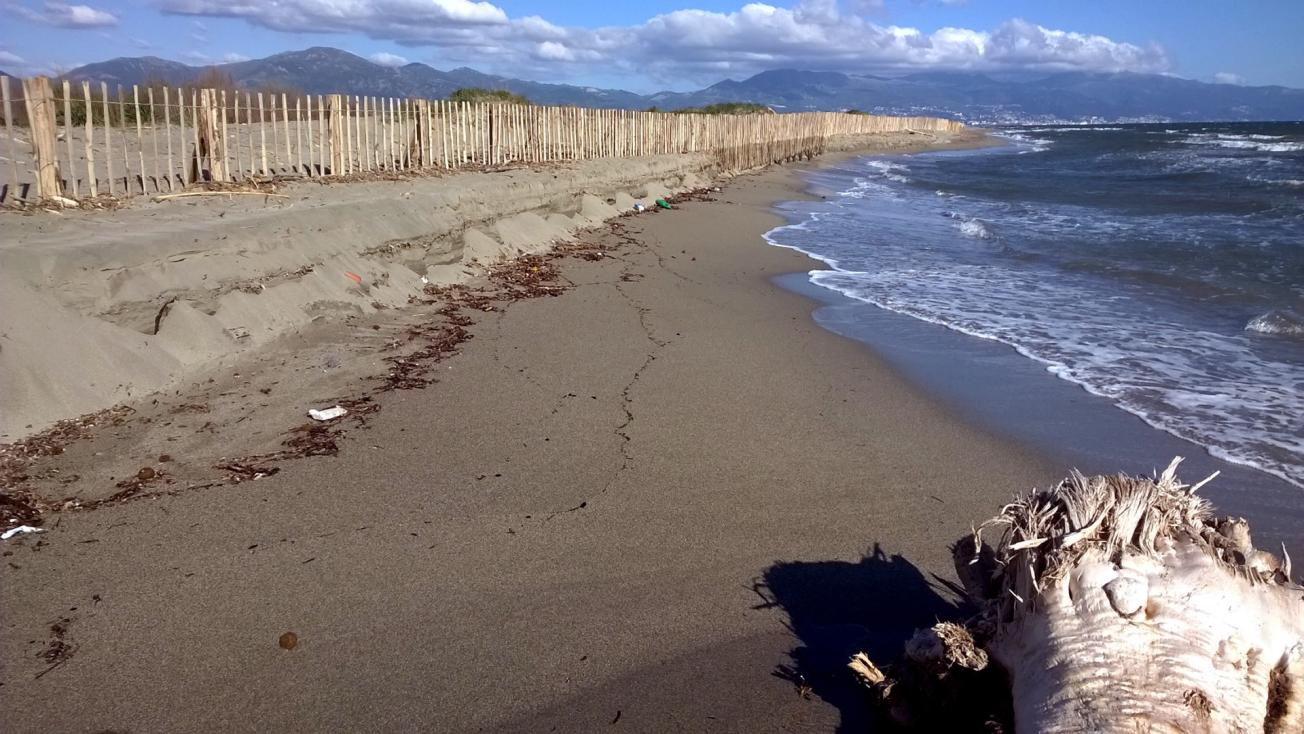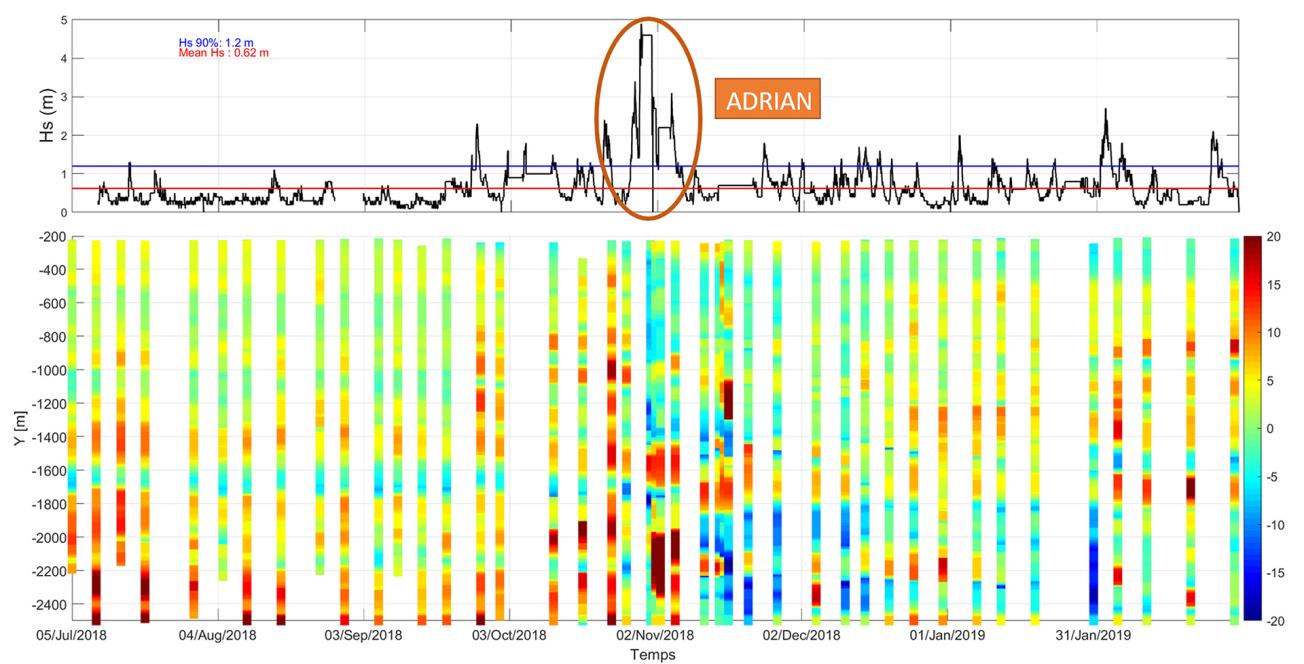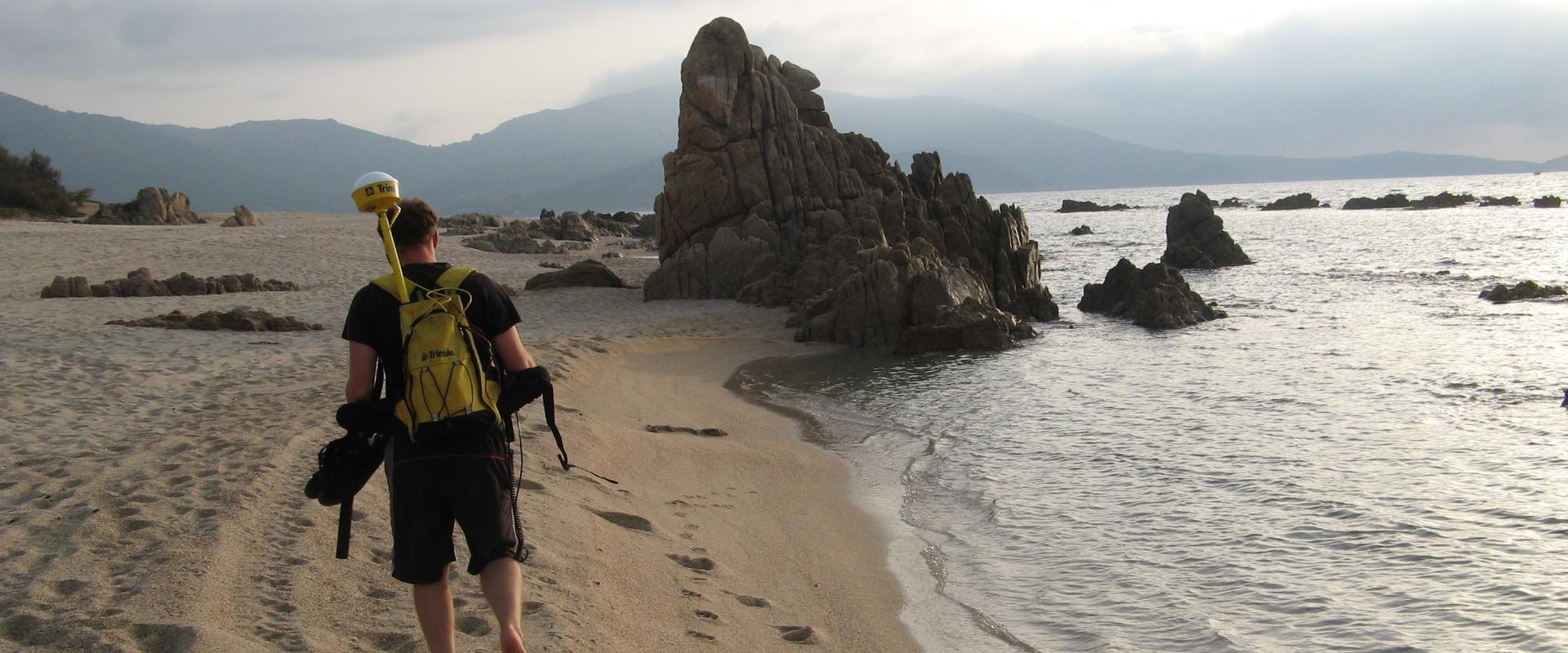
Dune cliff, Lido de la Marana (Corsica, 2016).
© BRGM
The need
Exposed to coastal hazards and extremely vulnerable to the impacts of storms, the loose ground formations along the coastline of Corsica are also subject to strong anthropogenic pressure (urbanisation, tourist traffic, yachting, etc.). It was thus necessary to deploy a decision-support tool for integrated coastal management, which could be carried out by the ROL, whose main tasks are to monitor the geomorphological changes of 17 beaches and to disseminate knowledge via an Internet portal. The knowledge acquired through the ROL has also enabled the OEC and BRGM to contribute to the MAREGOT project, whose objectives are to improve knowledge of erosion phenomena and evaluate management methods on the scale of neighbouring coastal regions (Corsica, Provence-Alpes-Côte d’Azur or PACA, Liguria, Tuscany and Sardinia). For this project in Corsica, BRGM installed webcams to ensure real-time morphological monitoring of three beaches (Bastia, Moriani and Calvi) and set up a partnership network to monitor the impact of storms on the coastline.
The results
The acquisition of topo-bathymetric data at the 17 ROL sites made it possible to highlight the changing sedimentary processes of the Corsican coastline. Trends show moderate erosion, with a rate of coastline retreat of less than 1 m/year. However, the beaches of Corsica typically have significant spatial and temporal variability, they are very sensitive to storms, and their resilience varies according to their exposure. The cameras installed in 2018 as part of the MAREGOT project have shown their effectiveness in recording the impacts of storm Adrian in Bastia and Moriani (28/10/2018). Concomitantly, the "storm network" helps to raise awareness and mobilise coastal stakeholders to record the impacts of storms, as was done for the first time after the Adrian event.

Evolution of the position of the coastline in Bastia, as monitored by webcams, represented in relation to its average position (advancing or retreating).
© BRGM
Using the results
The data acquired within the framework of the ROL are public data, accessible via the dedicated internet portal. They are used to:
- find relevant solutions to the problems of development of the Corsican coast: extension of the port of Bastia, development of the Ajaccio coastal road or the Natura 2000 site of Taravo;
- estimate the foreseeable evolution of the coastline and assess the long-term risks for stakeholders on the coastal strip. BRGM has carried out these analyses for the ADAPTO site of Golo with projections up to 2050 (with the support of the Conservatoire du Littoral) and for the eastern plain with projections up to 2040 and 2100 (analysis in progress with the support of the DDTM2B);
- finally, the coastal observation network is indispensable for developing a regional strategy for integrated management of the Corsican coastline, which the Corsican Authority, via the OEC, has initiated and which must be implemented in the next few years.
The partners
- Corsica Environment Office (OEC)
- Pays Ajaccien local authority (CAPA)
- DREAL of Corsica

We have been working with BRGM for almost 25 years, which allows us to benefit from a network of experts. Our collaboration has enabled us to build up a solid knowledge base which today gives us the necessary hindsight to initiate a regional intervention strategy. Thanks to this knowledge, we are setting up European aid mechanisms so that public contracting authorities can benefit from them while implementing their regional planning policy.







